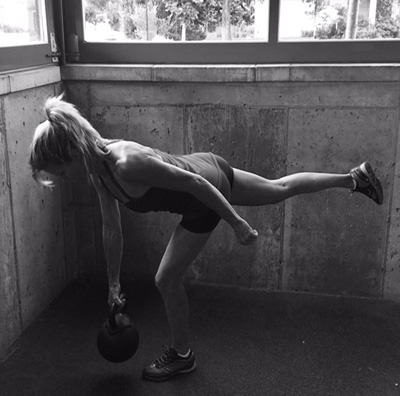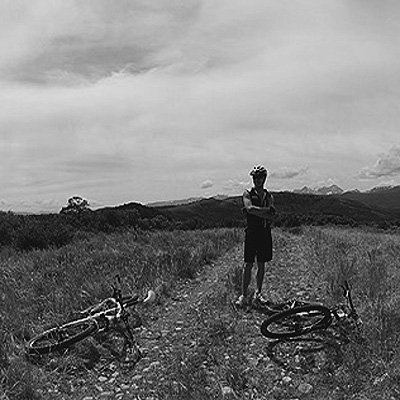Don’t be afraid of the sun.
So many people in the U.S. are low on Vitamin D, and sunlight; both of which, as it turns out, we need more than many people realize. Here are two articles that describe the health benefits of Vitamin D and sun exposure (without hiding under layers of UVA/UVB protection!). So get out there and enjoy that sunshine (:
Click the title links for the original article page.
NYTimes:
WELL; Personal Health: Reasons That Vitamin D May Matter
JANE E. BRODY
At least once a week, someone, usually a woman over 50, asks me about vitamin D. Perhaps a routine checkup has revealed a deficiency, prompting the doctor to recommend an over-the-counter supplement or, in severe cases, large prescription doses to correct the problem.
Often, though, the concern is bone health. Without vitamin D, the body cannot properly absorb calcium, and bones become fragile. At the annual meeting of the American Academy of Orthopaedic Surgeons last month, researchers reported that among 889 adult patients treated for a fracture at a Missouri trauma center, blood levels of vitamin D were ”insufficient” in 78 percent and ”frankly deficient” in 39 percent. The study group excluded those with known risk factors for vitamin D deficiency.
A second report, by doctors in Seoul, South Korea, found vitamin D levels were ”significantly lower” among 104 postmenopausal women who had broken a wrist than among 107 age-matched controls without a fracture.
But increasingly I receive inquiries regarding research suggesting that raising blood levels of vitamin D may protect against chronic or life-threatening diseases. Many studies in recent years have linked low levels to health risks like heart disease, high blood pressure, cancer, rheumatoid arthritis and other autoimmune diseases, prompting many health-conscious men and women to think that supplements of vitamin D are protective.
Alas, there are still no large-scale randomized controlled clinical trials – the gold standard of human research – to prove or disprove the value of vitamin D supplementation beyond its well-known benefits to bone health.
Nonetheless, Dr. Kevin A. Fiscella, a public health specialist and family physician at the University of Rochester, has decided to take 1,000 international units of vitamin D each day, based on data from his studies linking racial disparities in vitamin D levels to disease risk and his belief that ”it can’t hurt and it may help.”
A Vitamin With Broad Influence
In an interview, Dr. Fiscella emphasized that his findings strongly suggest, but do not prove, that vitamin D deficiencies cause or contribute to diseases like colorectal cancer, high blood pressure and kidney and heart disease, which affect black Americans at higher rates than whites. The findings are bolstered by known biological effects of vitamin D and by the fact that widespread vitamin D deficiencies occur among blacks living in the Northern Hemisphere.
Nearly every body tissue has receptors for vitamin D, among them the intestines, brain, heart, skin, sex organs, breasts and lymphocytes, as well as the placenta. The vitamin, which acts as a hormone, is known to influence the expression of more than 200 genes.
In laboratory studies, it has been shown to have anticancer activity, inhibiting the growth and spread of tumors. There is also suggestive but inconclusive evidence that vitamin D deficiency plays a role in asthma, Type 2 diabetes, autoimmune diseases like multiple sclerosis and rheumatoid arthritis, pre-eclampsia and low birth weight, and neuropsychological disorders like depression, autism and memory loss. Vitamin D is a fat-soluble essential nutrient that naturally enters the body primarily through the skin, where ultraviolet B radiation in sunlight stimulates production of previtamin D. This, in turn, is converted to the biologically active form, vitamin D hormone, in the kidneys.
Very few foods naturally contain meaningful levels of vitamin D; mostly they are fatty cold-water fish like salmon, mackerel, bluefish, anchovies, sardines and tuna, as well as cod liver oil. Some foods are fortified with the vitamin, especially milk, infant formula and, more recently, some brands of orange juice, yogurt, cheese and breakfast cereal.
Several factors work against achieving the levels of vitamin D known to prevent bone loss, let alone other diseases should a cause-and-effect ever be established.
One is skin color. Dark skin evolved in equatorial Africa, where the sun is intense year round and just a brief daily exposure to UVB (the sun’s burning rays) is sufficient to achieve adequate blood levels of vitamin D. But melanin in the skin acts as a natural sunblock, and among blacks living in the United States, where sun is less intense, less of the previtamin is produced.
Dr. Fiscella’s studies, based on thousands of adult participants in the National Health and Nutrition Examination Survey conducted from 2001 to 2006, revealed much higher rates of vitamin D deficiency among non-Hispanic blacks than non-Hispanic whites. Furthermore, in separate studies, lower levels of vitamin D among blacks across the country were associated with a greater incidence of colorectal cancer, high blood pressure, protein in urine (a precursor of kidney disease) and cardiovascular deaths.
Avoiding Deficiency
Warnings about the cosmetic and cancerous consequences of undue sun exposure have prompted millions of health-conscious Americans to protect themselves from UVB with protective clothing and liberal use of sunscreen on exposed skin. The latter can reduce previtamin D production in skin by more than 90 percent.
In addition, because vitamin D is stored in body fat, the dramatic increase in obesity in this country is placing more people, regardless of skin color, at risk of inadequate levels of D in blood serum.
Finally, consumption of milk has declined significantly, and most other popular dairy products are not fortified with D.
As a result, growing numbers of light-skinned Americans are finding that they, too, are not getting enough D to bring their serum levels to 20 nanograms per milliliter, the level deemed adequate by the Institute of Medicine, and even fewer reach 30 nanograms, the level many bone specialists and vitamin D researchers consider more desirable.
A placebo-controlled clinical trial called Vital, sponsored by the National Institutes of Health and due to be completed in 2016, is assessing the effect of a daily supplement of 2,000 I.U. of vitamin D on the risk of developing heart disease, cancer and stroke among 20,000 men over 50 and women over 55 with no prior history of these diseases.
Meanwhile, the Endocrine Society recommends that people at risk for vitamin D deficiency be screened to determine their serum levels, including those with bone disease, chronic kidney disease, liver failure, malabsorption syndromes (resulting from cystic fibrosis, irritable bowel disease, weight-reduction surgery or abdominal radiation), overactive parathyroid and granuloma-forming disorders. People taking drugs like anticonvulsants, glucocorticoids, antiretrovirals, antifungals and cholestyramine also should be tested, as well as older adults with a history of falls or nontraumatic fracture.
Certain groups at risk for a deficiency also warrant screening: blacks, obese children and adults, and pregnant or nursing women, Dr. Fiscella said.
SCIENCE NEWS:
Sunshine Could Benefit Health and Prolong Life, Study Suggests
Published: May 7, 2013
Exposing skin to sunlight may help to reduce blood pressure, cut the risk of heart attack and stroke – and even prolong life, a study suggests.
Researchers have shown that when our skin is exposed to the sun’s rays, a compound is released in our blood vessels that helps lower blood pressure.
The findings suggest that exposure to sunlight improves health overall, because the benefits of reducing blood pressure far outweigh the risk of developing skin cancer.
The study has been carried out by the University of Edinburgh.
Heart disease and stroke linked to high blood pressure are estimated to lead to around 80 times more deaths than those from skin cancer, in the UK.
Production of this pressure-reducing compound – called nitric oxide – is separate from the body’s manufacture of vitamin D, which rises after exposure to sunshine. Until now it had been thought to solely explain the sun’s benefit to human health, the scientists add.
The landmark proof-of-principle study will be presented on Friday in Edinburgh at the world’s largest gathering of skin experts.
Researchers studied the blood pressure of 24 volunteers who sat beneath tanning lamps for two sessions of 20 minutes each. In one session, the volunteers were exposed to both the UV rays and the heat of the lamps. In the other, the UV rays were blocked so that only the heat of the lamps affected the skin.
The results showed that blood pressure dropped significantly for one hour following exposure to UV rays, but not after the heat-only sessions. Scientists say that this shows that it is the sun’s UV rays that lead to health benefits. The volunteers’ vitamin D levels remained unaffected in both sessions.
Dr Richard Weller, Senior Lecturer in Dermatology at the University of Edinburgh, said: “We suspect that the benefits to heart health of sunlight will outweigh the risk of skin cancer. The work we have done provides a mechanism that might account for this, and also explains why dietary vitamin D supplements alone will not be able to compensate for lack of sunlight.
“We now plan to look at the relative risks of heart disease and skin cancer in people who have received different amounts of sun exposure. If this confirms that sunlight reduces the death rate from all causes, we will need to reconsider our advice on sun exposure.”
See here for another article describing current studies on Vitamin D and their results: http://www.sciencenews.org/view/generic/id/349526/description/Vitamin_D_doesnt_disappoint


